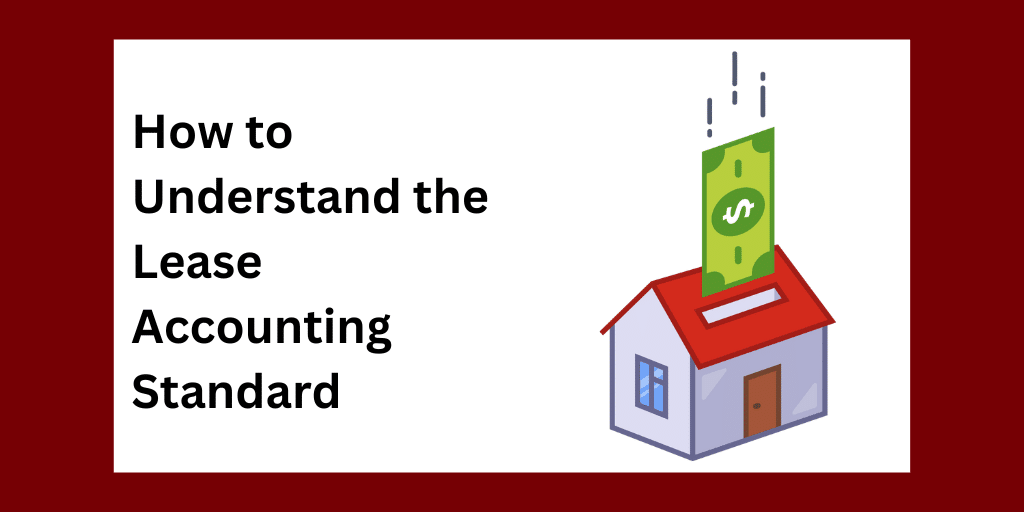
Finance and Operating Leases: Lessees
By Charles Hall | Accounting
Most CPAs grapple with leases from the lessee’s point of view, so in this post, we’ll look at finance and operating leases from the lessee’s perspective. Under the new lease standard (ASC 842, Leases), what are the types of leases? Does the accounting vary based on the type of lease? Are lease expenses different?
First, let’s start by defining the types of leases and how to classify them.
The Types of Leases
Upon the commencement date of the lease, the company should classify the lease as either a finance or an operating lease using ASC 842. (Under ASC 840, a finance lease was referred to as a capital lease.)
Finance Lease
So what is a finance lease? A lease is considered a finance lease if it meets any of the following criteria:
- The lease transfers ownership of the underlying asset to the lessee by the end of the lease term
- The lease grants the lessee an option to purchase the underlying asset that the lessee is reasonably certain to exercise
- The lease term is for the major part of the remaining economic life of the underlying asset (today, we use the 75% rule)
- The present value of the sum of the lease payments and residual value guarantee equals or exceeds substantially all of the fair value of the underlying asset (today, we use the 90% rule)
- The underlying asset is of such a specialized nature that it is expected to have no alternative use to the lessor at the end of the lease term
While the bright-line criteria (e.g., the lease term of 75% or more of economic life) have been removed, the basis for conclusions in the new lease standard acknowledges some old rules of thumb. It says that one reasonable approach to determining whether the lease is for a significant portion of the asset’s life is the 75% threshold. The conclusion goes on to say that “90 percent or greater is ‘substantially all’ of the fair value of the underlying asset.” So, in effect, FASB removed the bright lines as a rule but not in principle–the conclusion says FASB “does not mandate those bright lines.”
Operating Lease
And what is an operating lease? It’s any lease that is not a financing lease.
Accounting Similarities and Differences
Both operating and finance leases result in a right-of-use asset and a lease liability. The subsequent accounting for the two types of leases is quite different.
Finance Lease Accounting
The accounting for a finance lease–using ASC 842–is similar to capital lease accounting under ASC 840.
When a company enters a finance lease, it records the right-of-use asset and the lease liability. The amortization of the right-of-use asset will be straight-line, and the amortization of the liability will be accounted for using the effective interest method. Consequently, lease expenses are front-loaded (i.e., expenses will decline throughout the lease term). The amortization and interest expenses will be presented separately on the income statement.
As we are about to see, operating lease accounting is significantly different, particularly with regard to accounting for the lease expense and the amortization of the right-of-use asset.
Operating Lease Accounting
The primary change in lease accounting lies in the operating lease area. Under ASC 842, a company will book a right-of-use asset and a lease liability for all operating leases greater than twelve months in length (an election has to be made to exclude leases of twelve months or less). Under ASC 840, no asset or liability was recorded.
Will the operating lease expense be any different than it has been? No. But the recording and amortization of the right-of-use asset and the lease liability are new.
The Initial Operating Lease Entries
Let’s say a company has a five-year operating lease for $1,000 per month and will pay $60,000 over the life of the lease. How do we account for this lease? First, the company records the right-of-use asset and the lease liability by discounting the present value of the payments using the effective interest method. In this example, the present value might be $54,000. As the right-of-use asset and lease liability are amortized, the company will (each month) debit rent expense for $1,000—the amount the company is paying. So the expense amount is the same as it was under ASC 840.
Amortizing the Right-of-Use Asset and the Lease Liability
How does the company amortize the right-of-use asset and the lease liability? The lease liability is amortized using the effective interest method, and the interest expense is a component of the rent expense. What’s the remainder of the $1,000? The amortization of the right-of-use asset. The $1,000 rent expense comprises two parts: (1) the interest expense for the month and (2) the right-of-use amortization amount, which is a plug to make the entry balance. Even though the rent expense is made up of these two components, it appears on the income statement as one line: rent expense (unlike the finance lease, which reflects interest expense and amortization expense separately).
Potential Impairments
Due to the straight-line lease expense calculation mechanics, the right-of-use asset amortization expense is back-loaded (i.e., the amortization expense component is less in the early part of the lease). One potential consequence of this slower amortization is that the right-of-use asset is more likely be impaired (at least as compared to a financing lease). The impairment rules do apply to the right-of-use asset.
Here’s a video showing you the journal entries for financing and operating leases.

Your Thoughts
So, what do you think of the new lease accounting? Is it better? Worse?
You can see my first two lease posts here:
Post 1: How to Understand the New Lease Accounting Standard
Post 2: Get Ready for Changes in Leases and the Leasing Industry





